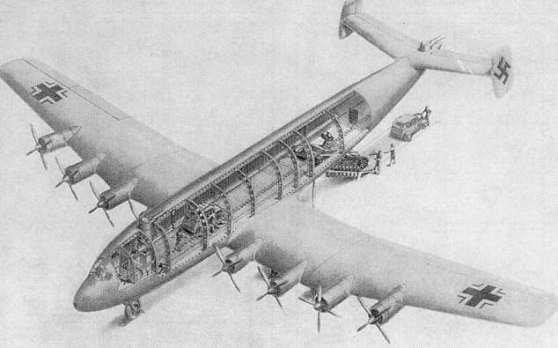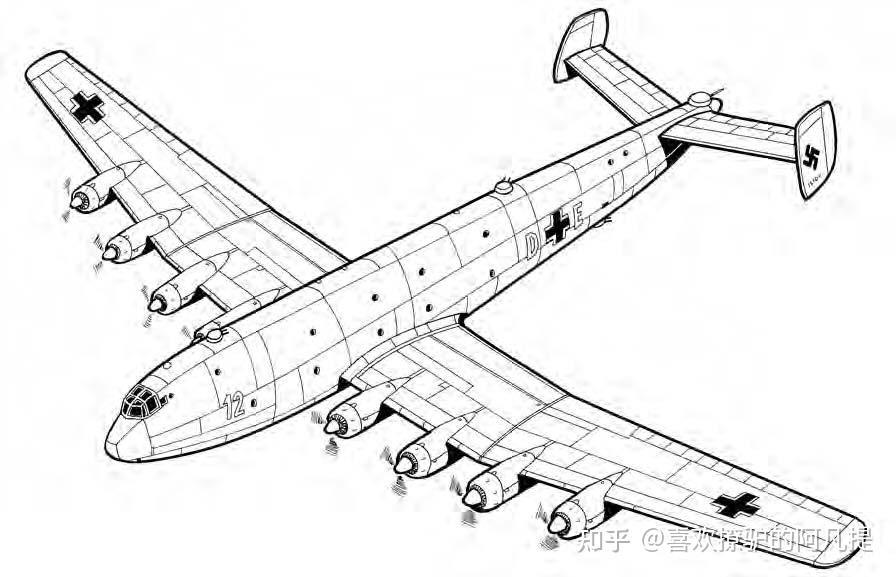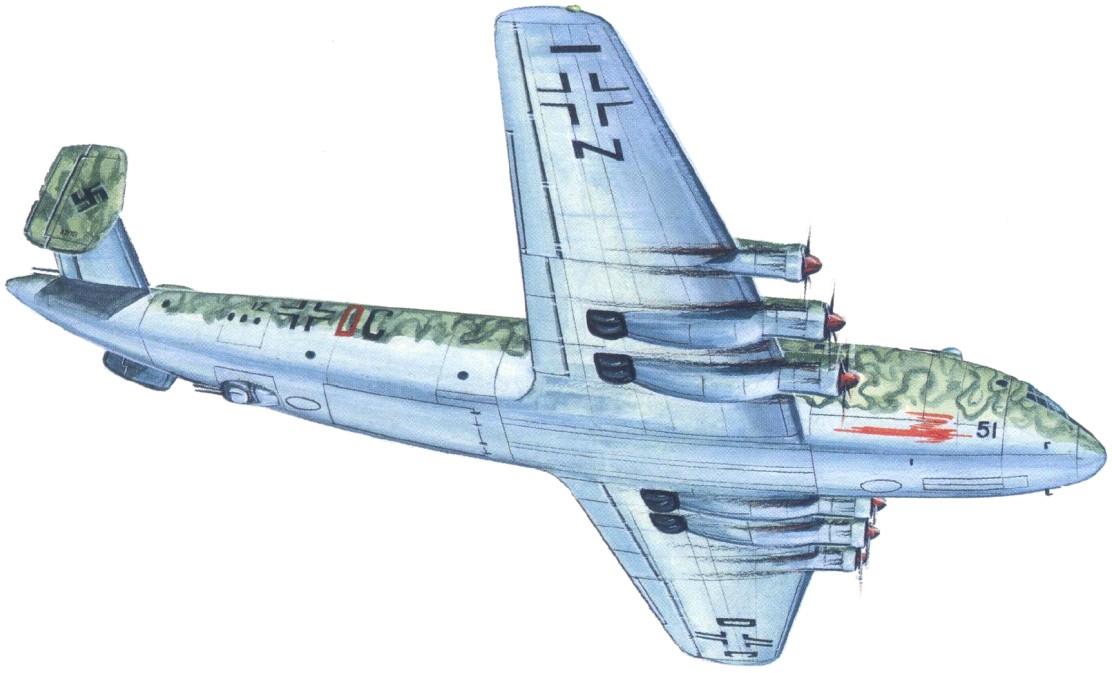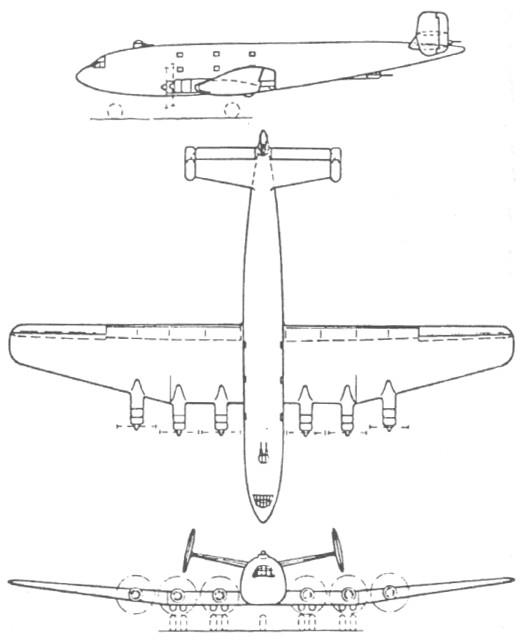Work began in 1942 on the development of an all-metal low-wing aircraft that could carry 30–40 t of cargo at an altitude of 2000 m for up to 1500 km. The performance calculations for this were carried out in the spring and summer of that year by Janson Voigtsberger in the Flight Mechanics-L department at Focke-Wulf. Two designs with six and eight engines were developed, which were given the numbers 246 and 249, which is why the (incorrect) type designations Fw 246 and Fw 249 can sometimes be found in the literature. Voigtsberger examined various engines to determine the optimal combination of airframe and engine. The shortlist included the BMW 801, BMW 802, DB 603 and Jumo 222 engines. In the end, he came to the conclusion that installing eight Jumo 222 engines would provide the best performance. With this configuration, the P 195 would have been probably the largest aircraft of the Second World War. The cargo hold would have made it possible to transport a Panzer III or Panzer IV plus two other vehicles. If an intermediate deck had been installed, the P 195 would have been able to carry up to 400 fully equipped soldiers. A trolley with a 3-ton load capacity, located on the ceiling and movable over the entire length of the cargo hold of 26 m, and a winch with two 10-ton pulling powers would have made it possible to quickly load and unload even heavy loads via a lowerable loading hatch in the rear section. In order to save valuable light metal during construction, the use of steel was also planned. The investigations showed that a proportion of 20 to a maximum of 25% steel in the overall construction would be the best combination of performance and mass.
In August 1942, Focke-Wulf submitted both the design with six and eight engines to the Reich Air Ministry. No order was placed for either of them and when development of the Jumo 222 was discontinued a year later, Project 195 was also finally terminated.
| Type |
7 -9 seat transport |
| Engine |
8 Junkers Jumo 222 |
| Dimensions |
Length 47 m , height 11,8 m , span 58 m , wing area 460 m2 , |
| Weights |
Empty 60000 kg, loaded , max. take off weight 112000 kg |
| Performance |
Max.. speed 490 km/h at 3600 m, cruising speed 400 km/h at 3600 m, range 1500 km, max. - 2100 km, endurance , service ceiling 7100 m , climb 4,7 m/sec., landing speed 135 km/h, start runway 800 m, to 20 m 1400 m |
| Armament |
1 15 mm or 20 mm twin MG 151 in 4 positions |



